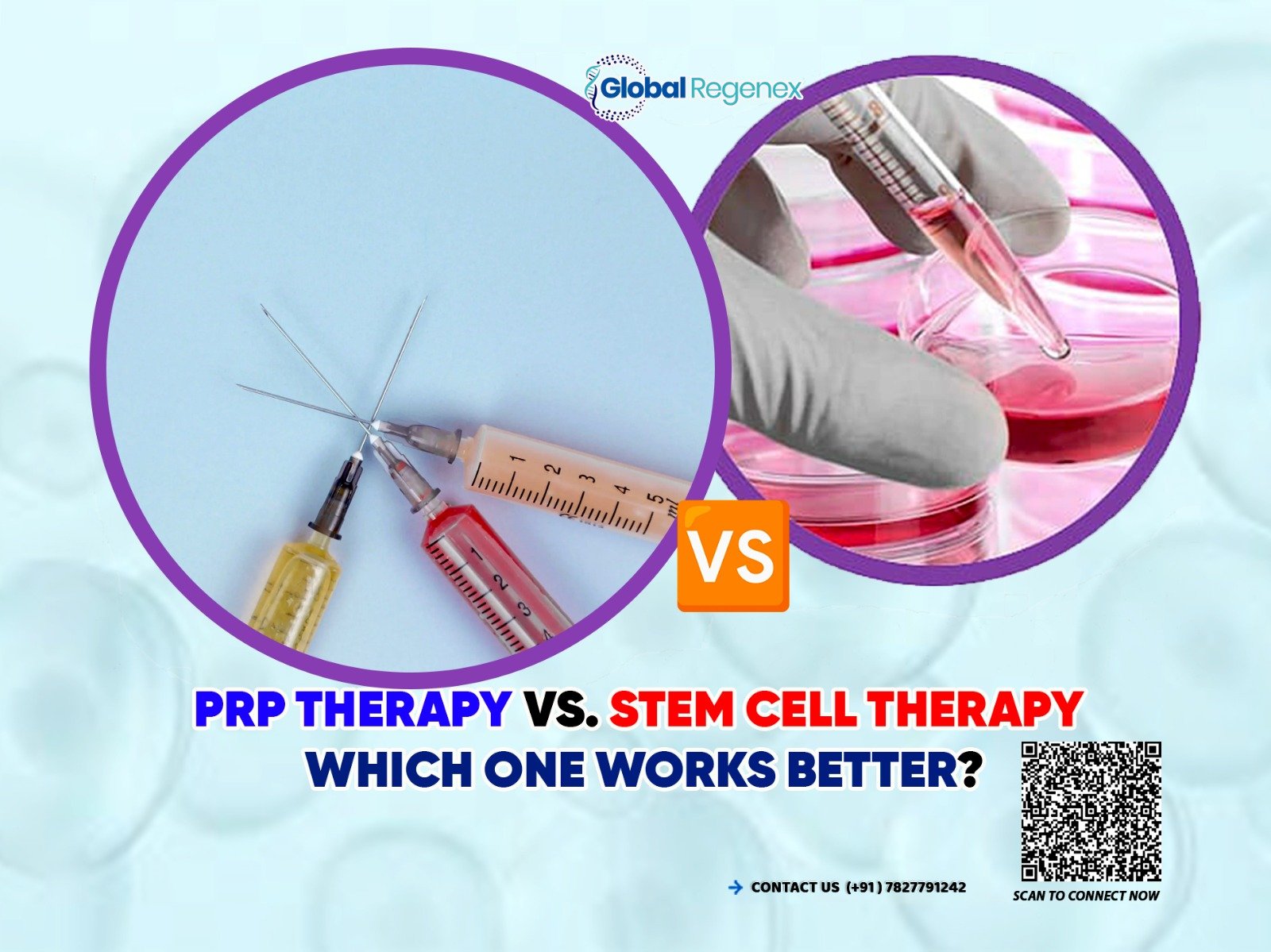Summary: Regenerative medicine provides alternative options for chronic illness, joint pain, and injury. Two of the more popular treatment options, Platelet-Rich Plasma (PRP) therapy and stem cell therapy, will be compared with respect to their efficacy. Both lead to the natural healing process, but do so in different ways, have different recovery timelines, and have long-term effects. This blog provides an overview of the differences that can lead to better understanding among patients.
If you have been plagued by joint pain, repeated sports injuries, or the development of arthritis, you understand too well the frustration of searching for true, lasting relief. Pain medication only masks the pain, physical therapy takes a time commitment, and surgery may be a last resort. More and more patients are turning to regenerative medicine, treatments designed to enable the body to heal itself in the first place.
The two best-known options, Platelet-Rich Plasma (PRP) therapy and Stem Cell therapy, are the most popular. Both are minimally invasive, non-pharmacologic, and tissue-restorative, rather than just pain-suppressing. But they work in different ways, and that’s what brings about the true question that most patients would like to hear: Which is better for me, PRP or Stem Cell therapy?
In this blog, we are going to break down how every treatment works, compare their benefits, and indicate the differences so you can make an educated choice on your path to recovery.
What is PRP Therapy?
Platelet-rich plasma (PRP) therapy is a form of regenerative therapy that uses the patient’s own blood to stimulate healing. It does this by platelet concentration, which has growth factors that repair injured tissues. The process normally involves:
- Taking an amount of blood, which is small in quantity.
- Centrifugation to separate platelet-rich plasma.
- Injecting the PRP into the affected area in order to release growth factors that quicken healing.
Best indicated for: minor tendon damage, ligament sprains, hair loss therapy, and initial-stage arthritis.
What is Stem Cell Therapy?
Stem cell therapy is one step further in the sense that it involves cells that will be transformed into new forms of tissue, hence optimal for repairing large quantities of damage. It not only eliminates inflammation but also recreates cartilage, ligaments, and other tissue at the cellular level. The process entails:
- Drilling out the stem cells from bone marrow or fat tissue.
- Processing and injecting them into the injured area.
- Triggering natural tissue regeneration and repair.
Best suited for: severe arthritic diseases, cartilage injury, sports injuries, and degenerative disorders.
PRP vs. Stem Cell Therapy: Key Difference
| Factors | PRP Therapy | Stem Cell Therapy |
| Source | It uses platelets from the patient’s own blood. | Uses stem cells from bone marrow, fat, or umbilical cord. |
| Process | Simple blood draw and injection. | Stem cell extraction, processing, and targeted injection. |
| Healing Mechanism | Releases growth factors to boost healing. | Regenerates and repairs damaged tissues at the cellular level. |
| Best For | Mild injuries, hair loss, early arthritis, and tendonitis. | Severe joint damage, advanced arthritis, and severe degenerative conditions. |
| Recovery Time | A few days of the week. | It may take a few weeks to months, depending on the severity. |
| Effectiveness | Works best for minor injuries and temporary relief. | Provides long-term tissue repair and regeneration. |
| Cost | Relatively affordable | A little higher. |
Which One Is Better?
For mild ailments such as tendonitis, sports injuries, or thinning hair, PRP therapy is extremely useful given its ease of procedure and cost-effectiveness.
For more advanced or chronic ailments, such as advanced osteoarthritis or cartilage loss, stem cell therapy is more effective in the long run through tissue repair on the cellular level.
In most instances, doctors even go so far as to prescribe a combination of PRP and stem cell therapy for ultimate efficacy.
The Concluding Thoughts
Both stem cell therapy and PRP are novel therapeutic modalities, but are of variable efficacy based on the extent of the disease. PRP is appropriate for trivial conditions, whereas stem cell therapy is appropriate for advanced, degenerative conditions that call for regeneration.
If you are interested in undergoing regenerative therapy in India, visit Global Regenex for professional guidance, proper diagnosis, and customized treatment to address your condition.
Frequently Asked Questions (FAQs)
Q1. Is PRP therapy painful?
Ans. It is usually very mildly painful, similar to a routine injection.
Q2. How long does it take to see results from PRP or stem cell therapy?
Ans. PRP is likely to have effects in weeks, while stem cell therapy takes a few months, depending on the condition.
Q3. Can PRP and stem cell therapy be combined?
Ans. Yes, it is usually recommended by some clinics to utilize both of them for faster and improved recovery.
Q4. Where can international patients seek stem cell therapy in India?
Ans. Global Regenex provides expert consultation, treatment coordination, and recovery support for patients worldwide.

